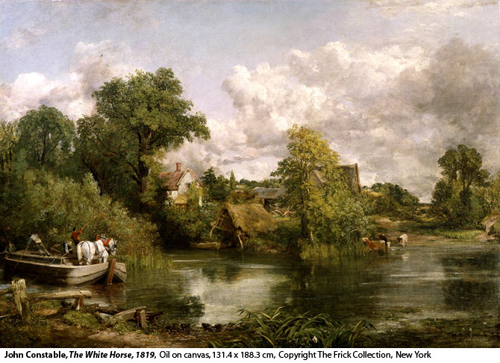Carrie Miller wonders whether recent developments in neuroaesthetics might have useful applications outside the lab – like weeding out art world phonies…
While people may not know much about art, it’s now been scientifically proven that when they look at what they like its effect on them is as physiologically meaningful as the experience of being in love.
A leading researcher in the burgeoning field of neuroaesthetics, Semi Zeki, recently conducted an experiment that demonstrated that the pleasure centre of the brain animates when someone looks at a beautiful painting in the same way as when you look at someone you love.
“What we found is when you look at art – whether it is a landscape, a still life, an abstract or a portrait – there is strong activity in that part of the brain related to pleasure”, the University College London professor explained.
You already love this painting…
The research subjects (who were chosen on the basis that they had little knowledge of art) underwent MRI scans while been shown a series of paintings by a range of artists including Ingres, Bosch, Monet and Cezanne. The works of Ingres, Italian painter Guido Reni and Constable produced the most potent physiological response. Works that were considered “ugly” such as those by Bosch produced the least significant changes in brain states.
Many in the art world believe that scientific evidence about the way art effects the viewer is a good thing – helping to prove the fundamental significance of art to the human experience. But like all scientific advances I think it’s worth looking at the pros and cons of this innovation a bit more closely.
A distinct advantage for the contemporary art world is that we could finally weed out the phoneys. We could round up those people who hang around smart gallery openings using words like “appropriation” too often, give them a quick cat scan, and see if they really do like conceptual art or if they’d prefer to be looking at a nice landscape [but they know it’s not cool]. On the downside, this would likely have a devastating effect on contemporary art – decimating its already small audience.
It would keep critics honest. Personally, I’d love to see inside John McDonald‘s brain. As a critic for a middle-brow broadsheet, the pressure on him to despise postmodernism must be enormous. Imagine finding out that his dopamine levels shoot up when he looks at Tom Polo‘s work and he flatlines in the face of that weird Asian art he’s always banging on about.
Conversely however, Adam Cullen would never get hung in the Archibald Prize if the judges’ brain states were measured during the adjudication process.
Perhaps most importantly in light of recent events, we would finally be able to identify perverts lurking around art galleries. If Zeki’s experiment could be refined to measure sexual pleasure in particular, we could out those disgraceful people getting off on images of children. I’d be happy to take the test if Fred Nile would.
Finally, imagine the potential of this technology to not only measure people’s aesthetic tastes but to alter them to suit our purposes. If Zeki’s measurement tools were combined with a form of aversion therapy, the audience for contemporary art could rival that of those awful blockbuster museum shows. Perhaps the Australia Council could fund a project where members of the public were paid to undergo a process where they were given a moderate electric shock every time they were shown a decorative painting. They could then be given a foot rub while witnessing some excruciatingly boring performance art in order to associate it with a pleasurable event.
The potential of cultural eugenics is endless. I don’t know about you but I’ve pretty much given up on trying to get people excited about contemporary art. Forcing them into it seems like a lot less work.

